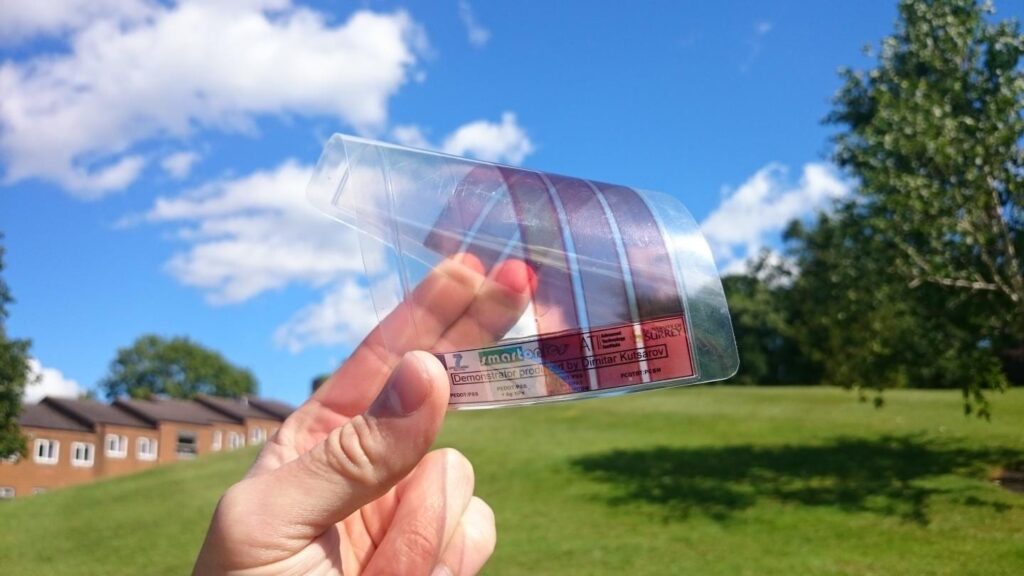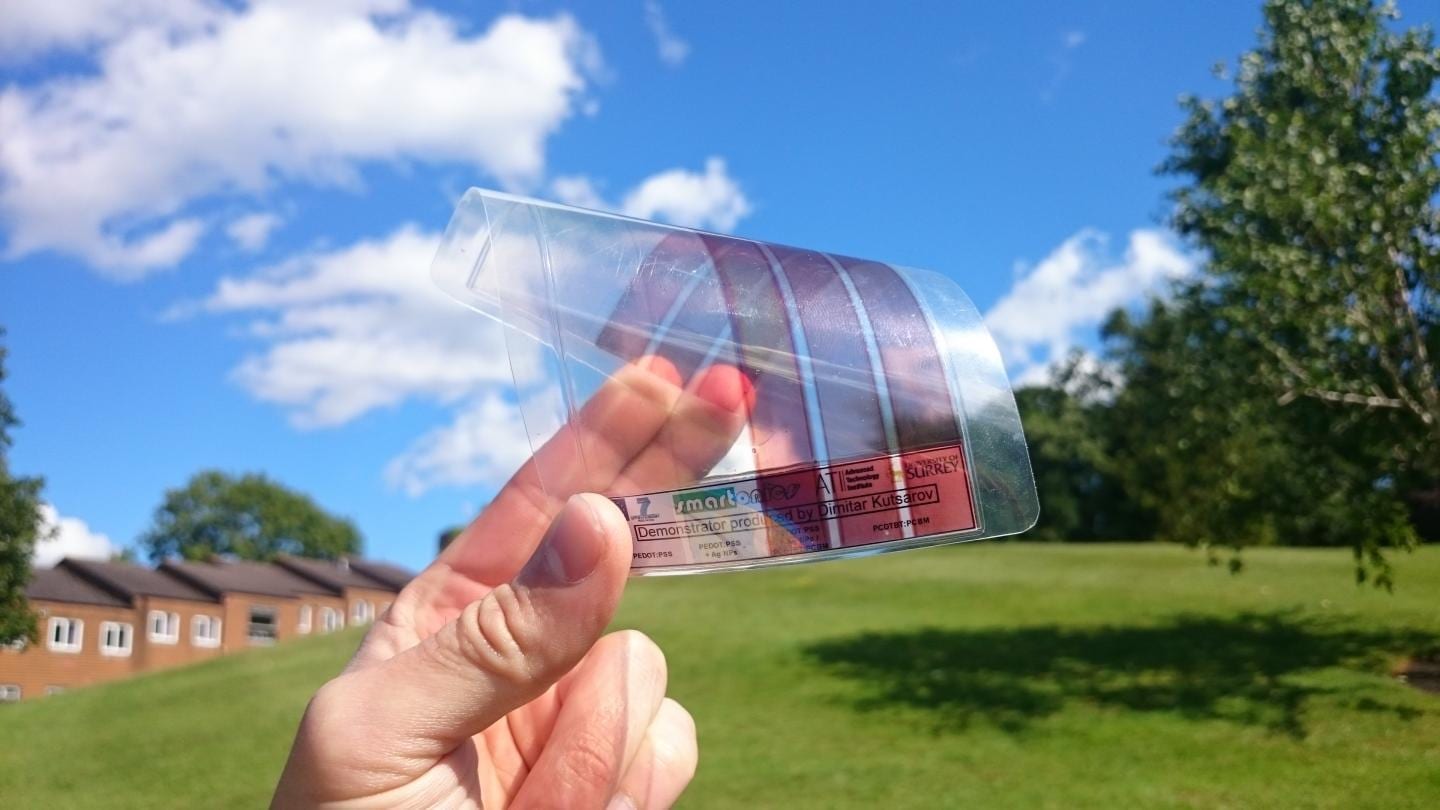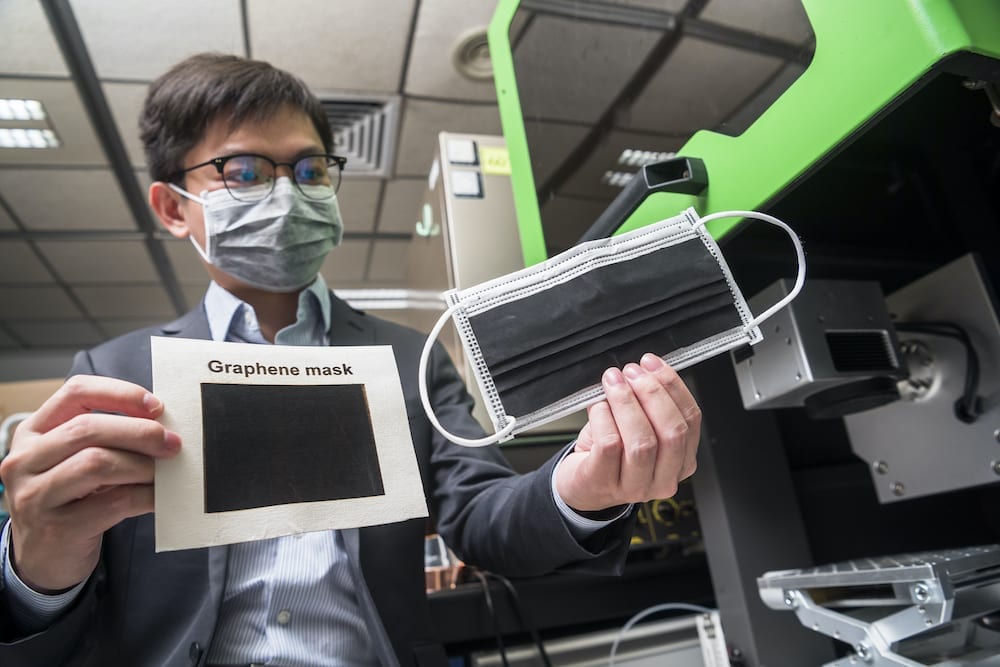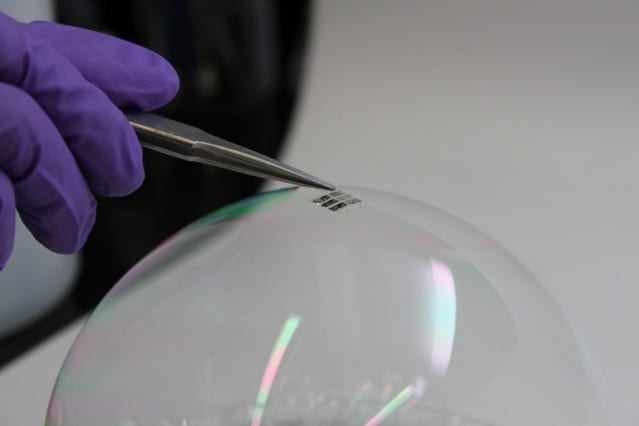
CREDIT
University of Surrey
New ultra-thin, patterned graphene sheets will be essential in designing future technologies such as ‘smart wallpaper’ and Internet-of-things applications
- New ultra-thin, patterned graphene sheets will be essential in designing future technologies such as ‘smart wallpaper’ and internet-of-things applications
- Advanced Technology Institute uses moth-inspired ultrathin graphene sheets to capture light for use in energy production and to power smart sensors
- Graphene is traditionally an excellent electronic material, but is inefficient for optical applications, absorbs only 2.3% of the light incident on it. A new technique enhances light absorption by 90%.
New research published today in Science Advances has shown how graphene can be manipulated to create the most light-absorbent material for its weight, to date. This nanometre-thin material will enable future applications such as ‘smart wallpaper’ that could generate electricity from waste light or heat, and power a host of applications within the growing ‘internet of things’.
Using a technique known as nanotexturing, which involves growing graphene around a textured metallic surface, researchers from the University of Surrey’s Advanced Technology Institute took inspiration from nature to create ultra-thin graphene sheets designed to more effectively capture light. Just one atom thick, graphene is very strong but traditionally inefficient at light absorption. To combat this, the team used the nano-patterning to localise light into the narrow spaces between the textured surface, enhancing the amount of light absorbed by the material by about 90%.
“Nature has evolved simple yet powerful adaptations, from which we have taken inspiration in order to answer challenges of future technologies,” explained Professor Ravi Silva, Head of the Advanced Technology Institute.
“Moths’ eyes have microscopic patterning that allows them to see in the dimmest conditions. These work by channelling light towards the middle of the eye, with the added benefit of eliminating reflections, which would otherwise alert predators of their location. We have used the same technique to make an amazingly thin, efficient, light-absorbent material by patterning graphene in a similar fashion.”
Graphene has already been noted for its remarkable electrical conductivity and mechanical strength. Professor Ravi’s team understood that for graphene’s potential to be realised as material for future applications, it should also harness light and heat effectively.
Professor Silva commented: “Solar cells coated with this material would be able to harvest very dim light. Installed indoors, as part of future ‘smart wallpaper’ or ‘smart windows’, this material could generate electricity from waste light or heat, powering a numerous array of smart applications. New types of sensors and energy harvesters connected through the Internet of Things would also benefit from this type of coating.”
Dr José Anguita of the University of Surrey and lead author of the paper commented: “As a result of its thinness, graphene is only able to absorb a small percentage of the light that falls on it. For this reason, it is not suitable for the kinds of optoelectronic technologies our ‘smart’ future will demand.”
“Nanotexturing graphene has the effect of channelling the light into the narrow spaces between nanostructures, thereby enhancing the amount of light absorbed by the material. It is now possible to observe strong light absorption from even nanometre-thin films. Typically a graphene sheet would have 2-3% light absorption. Using this method, our ultrathin coating of nanotextured few-layer graphene absorbs 95% of incident light across a broad spectrum, from the UV to the infrared.”
Learn more: New research unveils graphene ‘moth eyes’ to power future smart technologies
The Latest on: Graphene moth eyes
[google_news title=”” keyword=”graphene moth eyes” num_posts=”10″ blurb_length=”0″ show_thumb=”left”]
via Google News
The Latest on: Graphene moth eyes
- Graphene in Biomedicine: Opportunities and Challengeson May 5, 2024 at 5:00 pm
Graphene, whose discovery won the 2010 Nobel Prize in physics, has been a shining star in the material science in the past few years. Owing to its interesting electrical, optical, mechanical and ...
- The Flash Pro Plus gives you a power supply anywhere for only $199.97on April 27, 2024 at 7:00 am
TL;DR: Need to charge on the go? The Flash Pro Plus, a graphene power bank powered by Panasonic™, makes it easy to charge your Apple and Android devices anywhere. It’s now only $199.97 ...
- What Is Eye Syphilis? The Severe Symptom Doctors Are Seeing amid the STD Epidemicon April 26, 2024 at 2:46 pm
Doctors are seeing more patients with unusual vision and eye symptoms due to the sexually transmitted infection Amid the current syphilis “epidemic” in the U.S., doctors are seeing more ...
- Beauty is in the moth's eyeson April 18, 2024 at 5:00 pm
Some of the most efficient ARCs are made by mother nature and are found in the eyes of insects. The eyes of moths, for example, are covered with a layer of tiny bumps which are smaller than the ...
- Scientists finally make ‘goldene’, potentially breakthrough new materialon April 16, 2024 at 3:26 am
The work follows the successful production of graphene, which is made out of a single layer graphite atoms. That has been hailed as a miracle material: it is astonishingly strong, and much better ...
- ‘Wonder material’ graphene makes huge step towards practical useon February 16, 2024 at 2:19 am
Graphene, a “wonder material” that could help solve some of humanity’s deepest problems, has cleared a major hurdle towards practical uses. Graphene is the world’s thinnest, super-strong ...
- Why do some butterflies and moths have eyespots?on December 24, 2023 at 1:14 am
There are many butterfly and moth species that have developed what appear to be extra eyes. These distinct wing markings are often referred to as eyespots, false eyes or false eyespots and come in a ...
- Keep an eye out for the vibrant Rosy Maple Moth in North Carolinaon May 31, 2023 at 2:17 pm
Keep an eye out for Rosy Maple Moths. Don’t worry, they aren’t hard to spot thanks to their bright pink and yellow color. They are the smallest of the silk moths. Rosy Maple Moths get their ...
- Evolution of the Eye:on August 12, 2020 at 5:40 pm
When evolution skeptics want to attack Darwin's theory, they often point to the human eye. How could something so complex, they argue, have developed through random mutations and natural selection ...
- Graphene smart textiles developed for heat adaptive clothingon August 12, 2020 at 6:05 am
New research on the two-dimensional (2D) material graphene has allowed researchers to create smart ... allowing the wearer to project coded messages invisible to the naked eye but readable by infrared ...
via Bing News











